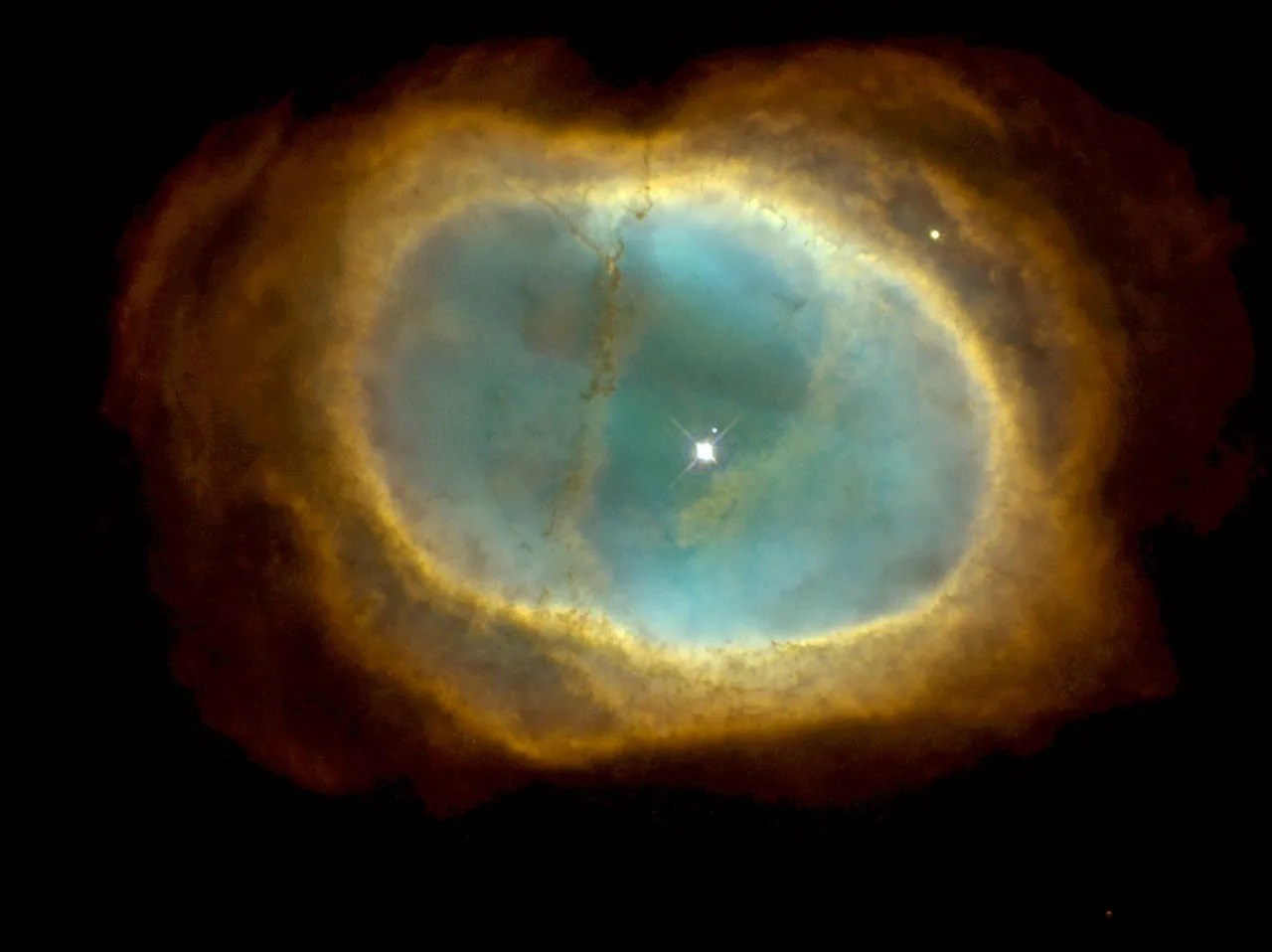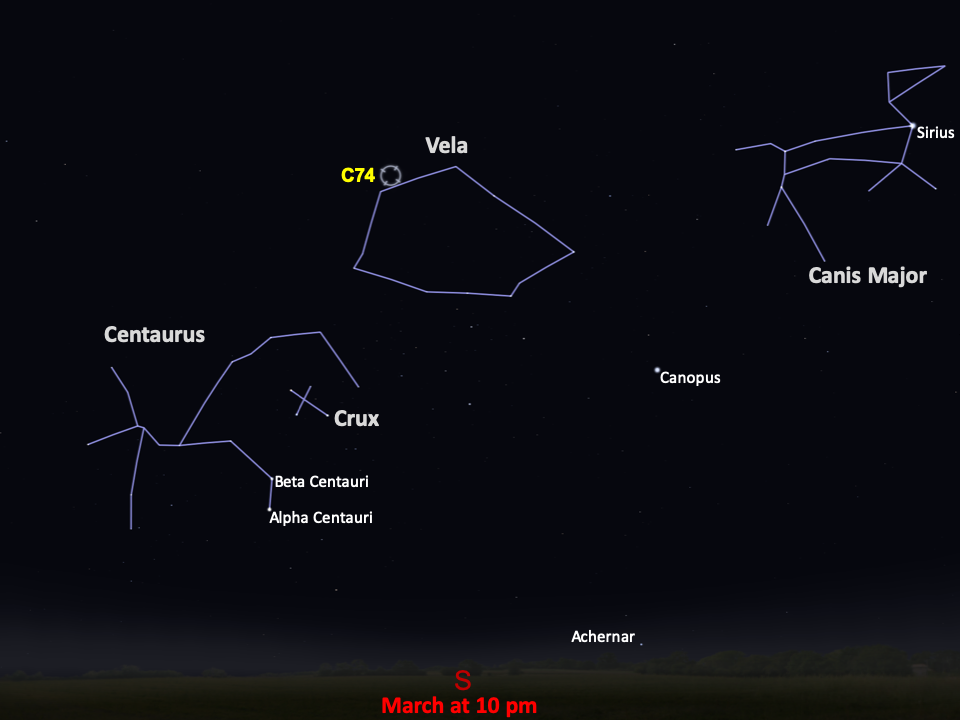Caldwell 74
Also known as the Southern Ring, this beautiful nebula is the result of a small dying star at its heart.
Distance
2,000 light-years
Apparent Magnitude
9.4
constellation
Vela
object type
Planetary Nebula

Caldwell 74 looks like a mystic, glowing lake floating in the cosmos, but its true identity is even stranger. Also known as the Southern Ring or Eight-Burst Nebula, this formation is debris from a dying Sun-like star. When medium-mass stars run out of the nuclear fuel that powers them, they eject their outer layers of gas into space. The gaseous shell then expands outward from the remaining core of the star, known as a white dwarf. Objects like this are called planetary nebulae, but only because early astronomers thought they resembled planetary orbs when seen through a small telescope — not because of any real relation to planets.
This nebula was produced by a star that is part of a binary, or double star, system. A bright star lies near the center of this Hubble image, but it’s actually the tiny star just above it that produced the nebula. A flood of ultraviolet radiation from the small white dwarf’s surface makes the surrounding gases fluoresce. The brighter star is in an earlier stage of stellar evolution, but in the future it will probably share a similar fate.
This image was taken using Hubble’s Wide Field and Planetary Camera 2. In this view, the colors illustrate the temperature of the gases, with blue representing the hottest gas and red representing the cooler gas at the outer edge. The Hubble image also reveals a host of dusty filaments that have condensed out of the expanding gases. Eons from now, these dusty particles may be recycled into new stars and planets.
A similar structure, known as the Ring Nebula or Messier 57, can be found in the northern constellation Lyra. The Southern Ring is its Southern Hemisphere counterpart, located in the constellation Vela. It was discovered by English astronomer John Herschel in 1835 and is also cataloged as NGC 3132. The magnitude-9.4 nebula is 2,000 light-years away and only about 0.4 light-years wide, so it can be somewhat challenging to observe with a small telescope. It is best viewed in autumn skies in the Southern Hemisphere. In the Northern Hemisphere, only southern stargazers will have a chance at spotting Caldwell 74, low in springtime skies.
For more information about Hubble’s observations of Caldwell 74, see:
A Glowing Pool of Light

Glossary
Binary Star System - Two gravitationally bound stars that orbit around a common point.
Magnitude - The brightness of an astronomical object, represented by a number; bright objects have low numbers on the magnitude scale, while dim objects have high numbers.
Nebula - An interstellar cloud of dust and gas; either a location where new stars are being forged or a cloud of material ejected into space by a dying star.
Planetary Nebula - An expanding shell of gas around an aging or dying Sun-like star, cast off by the star.
White Dwarf - The core of a dead Sun-like star whose outer layers have been expelled into space.
Explore Hubble's Caldwell Catalog
The following pages contain some of Hubble’s best images of Caldwell objects.

Caldwell 1
Also known as NGC 188, this group of stars formed from a large cloud of gas making the stars roughly…

Caldwell 2
This shell of gas is expanding outward, away from the dying star within.

Caldwell 3
This barred spiral galaxy was first spotted by British astronomer William Herschel in April 1793 in the constellation Draco.




